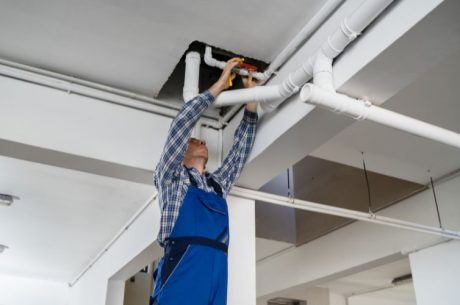
If you’re looking to save on energy costs, you can turn off unused lights and set the thermostat lower, but these measures will not ensure the greatest savings. Studies show that between 10 and 30 percent of the average home heating budget is wasted because of air leaks. So one of the best ways to save money on energy costs is to eliminate these leaks all together. There are so many ways that cold air can get into a home and hot air can escape that figuring out where to start can be daunting. Use this checklist to help you fix air leaks in your house.
Find Air Leaks
To detect the location of air leaks in your house, start by closing all windows and exterior doors. Then turn off appliances, especially those that have a fan. Light a stick of incense and set it near any suspected leak such as a window or recessed lighting. If the smoke moves in a definite direction, you may have a leak.
Windows and Doors
Install weather stripping on windows and exterior doors—the most common places for air leaks. Also look around window and door frames for gaps and seal them with caulking.
Recessed Lighting
If your recessed lighting does not have an ICAT (Insulation Contact Air Tight) label, your recessed lights probably have vents leading directly into the attic—a sure-fire way to lose heat. Luckily, the fix is easy: an airtight baffle. Just remove the bulb, place the baffle, and then replace the bulb.
Chimneys and Flues
According to building codes, there must be a gap of at least one inch between wood framing and metal flues and two inches between framing and brick chimneys. Unfortunately, those gaps allow for air leakage. Fortunately, the fix is pretty simple. The gaps can be spanned with aluminum flashing and then sealed with high-temperature silicone caulk.
Check for Gaps around Pipes
Check around your house for places where wires, tubes, or pipes run from the inside to the outside. The spaces where they go through the wall can provide ample opportunity for air leaks. Seal all gaps between the wall and any wires, tubes, or pipes. Use squirt foam insulation for plugging wider gaps and caulk for plugging narrower ones.
One of the simplest and most cost-effective ways to tighten your energy belt is to fix air leaks in your house. If you fix air leaks in your house, you’ll reduce your heating bills and your carbon footprint as well.



 PuroClean Restoration Specialists
PuroClean Restoration Specialists